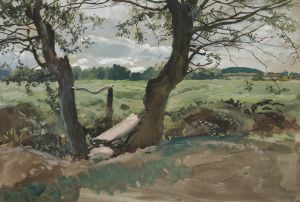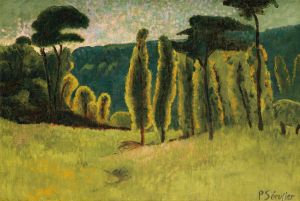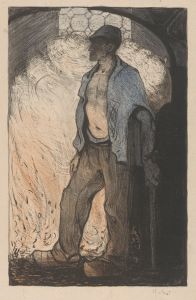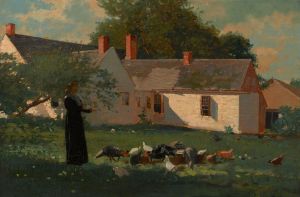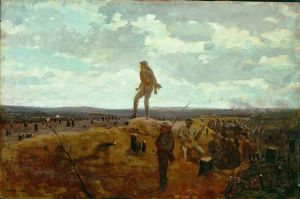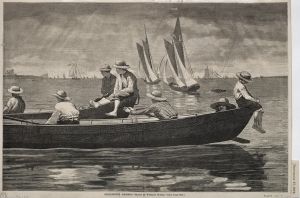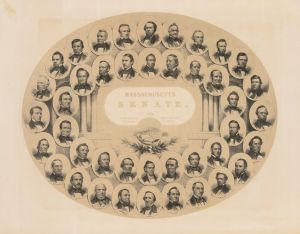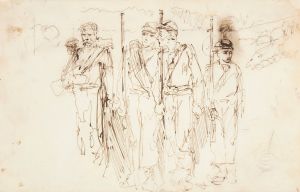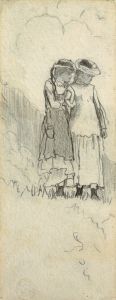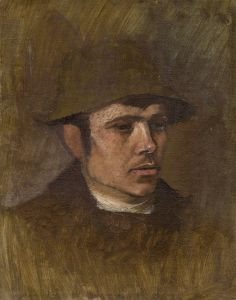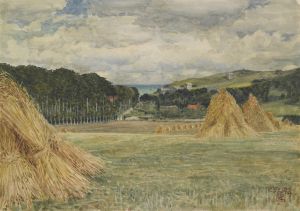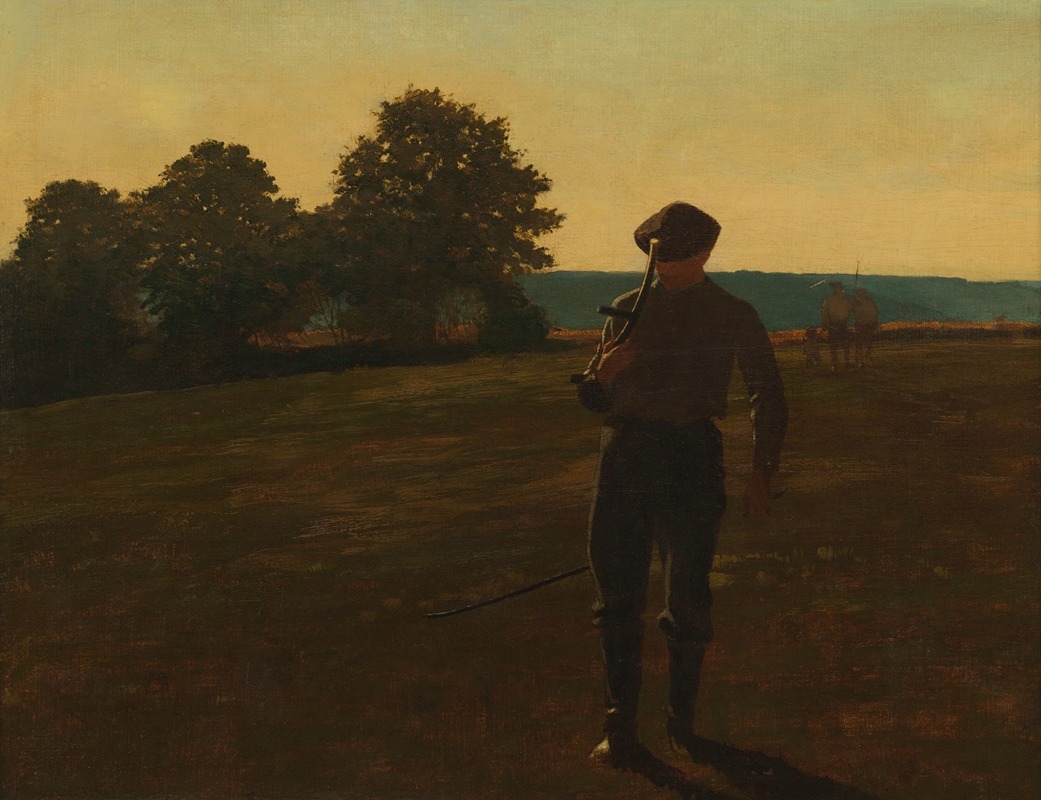
Man with a Scythe
A hand-painted replica of Winslow Homer’s masterpiece Man with a Scythe, meticulously crafted by professional artists to capture the true essence of the original. Each piece is created with museum-quality canvas and rare mineral pigments, carefully painted by experienced artists with delicate brushstrokes and rich, layered colors to perfectly recreate the texture of the original artwork. Unlike machine-printed reproductions, this hand-painted version brings the painting to life, infused with the artist’s emotions and skill in every stroke. Whether for personal collection or home decoration, it instantly elevates the artistic atmosphere of any space.
"Man with a Scythe" is a painting by the American artist Winslow Homer, created in 1866. Homer, born in 1836, is renowned for his landscape paintings and depictions of American life, particularly scenes of rural and coastal settings. This particular work exemplifies his early style and interest in capturing the everyday lives of ordinary people.
The painting portrays a solitary figure of a man wielding a scythe, engaged in the laborious task of cutting grass or grain. The man is depicted in a field, suggesting a rural environment, which was a common theme in Homer's work during this period. The composition focuses on the figure's activity, emphasizing the physicality and rhythm of manual labor. The man's posture and the sweeping motion of the scythe convey a sense of movement and effort, highlighting the demanding nature of agricultural work.
Homer's use of light and shadow in "Man with a Scythe" is notable. The artist employs a naturalistic approach, capturing the effects of sunlight on the landscape and the figure. The play of light and shadow not only adds depth and dimension to the scene but also enhances the realism for which Homer is celebrated. The painting's color palette is relatively muted, with earthy tones dominating the composition, further emphasizing the rural setting and the simplicity of the subject matter.
"Man with a Scythe" reflects Homer's interest in the American pastoral ideal, a theme that recurs throughout his oeuvre. During the post-Civil War era, there was a cultural shift towards appreciating the virtues of rural life and the hardworking individuals who sustained it. Homer's work often celebrated these themes, portraying the dignity and resilience of rural Americans.
The painting is also significant in the context of Homer's artistic development. In the mid-1860s, Homer was transitioning from his earlier career as an illustrator to becoming a full-time painter. His experiences as a war correspondent during the Civil War had a profound impact on his artistic vision, leading him to explore themes of human endurance and the American experience. "Man with a Scythe" is an early example of this shift, showcasing his growing mastery of oil painting and his commitment to depicting contemporary American life.
Today, "Man with a Scythe" is part of the collection at the Harvard Art Museums/Fogg Museum in Cambridge, Massachusetts. It remains an important work within Homer's body of work, illustrating his early exploration of rural themes and his skill in capturing the essence of everyday labor. The painting continues to be appreciated for its historical significance and its contribution to American art.
In summary, "Man with a Scythe" by Winslow Homer is a notable example of the artist's early work, reflecting his interest in rural American life and the dignity of labor. Created in 1866, the painting showcases Homer's naturalistic style and his ability to convey movement and effort through his depiction of a solitary figure engaged in agricultural work. The painting is housed at the Harvard Art Museums and remains an important piece in understanding Homer's artistic evolution and his contribution to American art.





